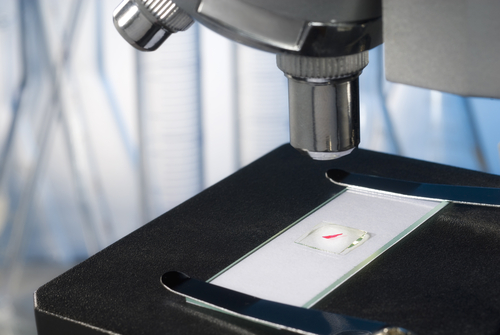 Scientists from Florida Atlantic University tested Raman spectroscopy as an in situ diagnostic method to distinguish normal from cancerous residual skin tissue. The study entitled “Raman Spectroscopy Differentiates Squamous Cell Carcinoma (SCC) From Normal Skin Following Treatment With a High-Powered CO2 Laser” was published in Lasers in Surgery and Medicine.
Scientists from Florida Atlantic University tested Raman spectroscopy as an in situ diagnostic method to distinguish normal from cancerous residual skin tissue. The study entitled “Raman Spectroscopy Differentiates Squamous Cell Carcinoma (SCC) From Normal Skin Following Treatment With a High-Powered CO2 Laser” was published in Lasers in Surgery and Medicine.
Skin cancer is divided into melanoma and non-melanoma subtypes, with the later including basal cell cancer (BCC) and squamous cell cancer (SCC). Skin cancer is the most common form of cancer in the world among caucasians and the number of people diagnosed with NMSC has increased significantly in recent years with more than 1 million cases per year in the U.S. alone.
The most common treatment for non-melanoma skin cancer consists of Mohs micrographic surgery, as it allows a physician to remove cancer while leaving healthy tissue intact. This procedure is very time-consuming since patients must undergo new examinations for cancer cells every time tissue is removed to evaluate further tissue excision. Furthermore, confirmation of complete cancer removal following ablation remains difficult.
“When a surgeon removes a cancer, whether it be with Mohs surgery for skin cancer or a surgeon using a robot in a modern operating room for abdominal cancer, the surgeon must rely on vision and touch to help decide initially how much tissue to remove,” Dr. John Strawswimmer, a study co-author, said in a press release.
In this study, Raman spectroscopy was successfully used for the first time to detect cancerous tissue following highly precise removal by laser ablation. The spectral classification model used correctly identified SCC tissue with 95% sensitivity and 100% specificity following partial laser ablation. Curiously, the main biochemical difference identified between normal and NMSC tissue correlated to high levels of collagen in the normal tissue.
Despite the encouraging results, the authors believe that imaging time can still be greatly reduced by adopting faster and more sensitive imaging techniques. “Successful clinical implementation of the proposed surgical method could greatly enhance the speed and effectiveness of skin cancer treatment, especially if real-time analysis of the process were developed,” added Dr. Andrew Terentis, the senior author of the study.


